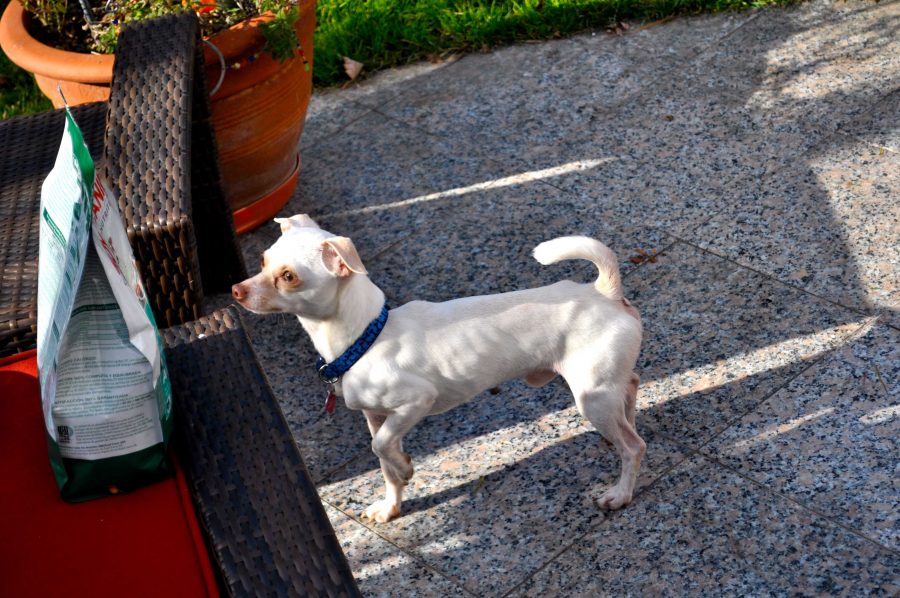“Come here, Charlie.”
Senior Chloe Simmons reached for her nervous foster child, then scooped him up and placed him on her lap. After taking a few seconds to settle down, Charlie relaxed and let her scratch his ears.
Charlie is not a human, but a emaciated two-year-old chihuahua. Before he moved in with the Simmons, he belonged to a dog hoarder who forced Charlie and four other dogs to fight for food. He often lost because of his small stature.
Charlie suffered from malnutrition — his case was so severe that the Simmons family had to clothe him in a blue and green dog sweater to keep him from shivering outside.
“When we got him, he was all bony and you could see his ribs,” Chloe said. “It was really [heartbreaking], so we’ve been trying to fatten him up.”
The Simmons first became interested in fostering dogs about four months ago, when the mother of the family, Heather Simmons, saw the American Society for the Prevention of Cruelty to Animals dog fostering program. The family was also looking for a companion for their family dog, Lucky, but they did not want a permanent pet in case he and Lucky did not get along.
“My dog started acting lonely and we decided that maybe having another dog would be better for him,” Chloe said. “We thought about going to the ASPCA and fostering dogs because that would be better for the community, and it would help our dog too.”
After an hour-long interview and several hours of paperwork, the ASCPA was finally able to confirm that their home was a safe and nurturing environment. In November 2011, the family took home their first foster dog, Momo. The chihuahua mix was from San Jose and lived with an abusive family before moving in with the Simmons. Because of his past environment, Momo behaved aggressively, and the Simmons concentrated on making him more calm and friendly.
As foster parents, the Simmons take in dogs and heal their defects to get them ready for adoption. According to Chloe, she posted photos of the Momo on Facebook, but only to show off her new foster dog, and not to advertise it for adoption. However, the posts landed a positive response from potential adopters and the Simmons arranged for several open house opportunities for families to come to their house and look at the foster dog.
About six or seven weeks after the Simmons first took him in, Momo was put up for adoption. Senior Cameron Yates and his family, who were specifically looking for a foster dog, had stopped their search to pursue him. The Yates officially adopted Momo in December 2011.
The Yates have had him for already a month, but a few of his aggressive qualities still show despite the work the Simmons put in to training him.
“[Momo] barks at pretty much everybody and he’s really protective of his toys,” Yates said. “But I guess that’s just because of his background and what he’s used to.”
Chloe, along with her sister freshman Emily Simmons, offered techniques their family used to get Momo more sociable, from showering the dog with attention to gradually bringing friends over so he can get used to seeing new faces.
“You want to bring only one or two friends over every once in a while,” Emily said. “If there’s a lot of people around, the dog will just get overwhelmed.
Chloe explained that all foster dogs need help in varying areas, and that there is not a fixed formula for rehabilitation. She added, however, that the family dog Lucky plays a big role in getting the foster dogs to adapt to their new homes.
According to the Simmons sisters, Charlie the chihuahua still has a lot to learn. With all the weight he still needs to gain and shots he still needs to get, he is looking at about another five or six weeks until he is ready for adoption. However, Emily knows that her family will be ready to let go of Charlie when the time comes.
“I’m excited for [Charlie] to get adopted, but I am going to miss him,” Emily said. “I’ve gotten really attached to him and I’ll miss the cuddles and his constant excitement.”





